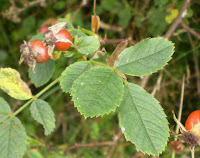I'm a lover, not a baker.
Ingredients.
A packet of leeks. My packet of leeks contained three.
For the bechamel
Milk
Flour (very circa 60g)
Butter (again, circa 60 g)
Nutmeg
Salt
Black pepper
Cheese (Emmental and Parmesan), grated.
Breadcrumbs.
Bring a saucepan to the boil. Top and tail the leeks, and strip off the outer leaves if necessary.Boil the leeks in lightly salted water for about 10 minutes.
Drain the leeks, and leave them aside for 10 minutes. In a sauce pan, melt a little butter, and gently saute the leeks. Place the leeks in a greased oven dish, and using the saucepan, make a bechamel (see below)*. Flavour the bechamel with a little grated nutmeg, black pepper, and sea salt. For this recipe I used circa 60g each of flour and butter, and an unknown quantity of milk.
Pour the bechamel over the leeks. Sprinkle with the grated cheese, and then the breadcrumbs.
Slap in a preheated oven, uncovered, at gas mark four for about 20 minutes, mid shelf. Check regularly. Remove when the topping is golden.
*For a quick Bechamel, gently melt a knob of butter, say 50g, and when that melts, add in roughly the same amount of sifted plain flour, whisking continually over the heat. Preheat some milk, so that it can be added warm.
Gradually, whisking continually, add the milk little by little (to avoid lumps), allow the sauce to bubble slightly - the bubbling releases and activated the thickening starch, and allows the sauce to come together(if the sauce doesn't bubble, it will thicken up unexpectedly when you reheat it). Add enough milk - gradually, - until the desired thickness is achieved. Normally until the sauce will coat the back of a spoon, but for certain sauces I make it thicker, and certain, thinner. This can then be flavoured with whatever the hell you want. Just black pepper and salt. Mature blue cheese. Gruyere. White wine. It's good for lasagne too.

It should look a little something like this. Sweet tasting slicing of wintry deliciousness. I've also added dry white wine to the bechamel for this dish, and it has worked well. A good stilton instead, lightly added, would underscore the sweetness of the leeks well. Bon appetit.









